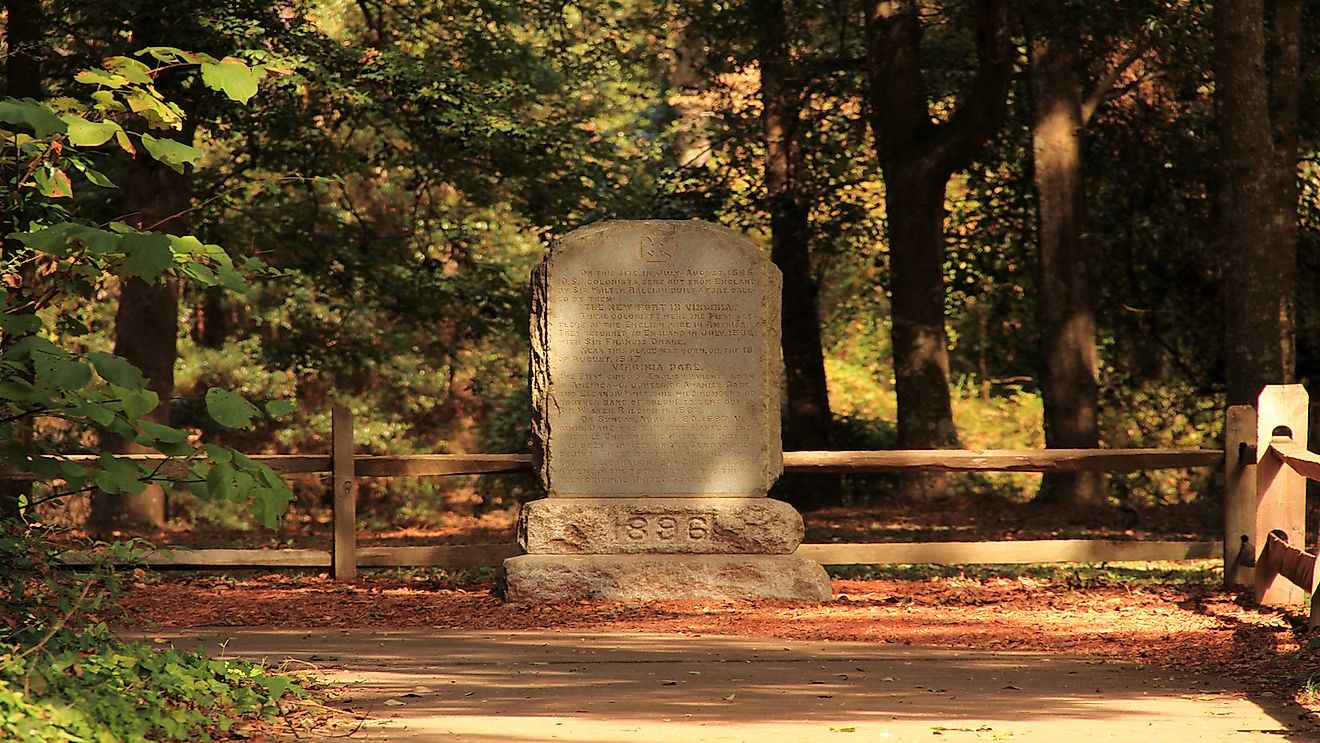Who Was Virginia Dare?

Virginia Dare was the first English child to be born in what would become The United States of America. She was born on August 18, 1587, on Roanoke Island (Virginia colony), to Eleanor White Dare and Ananias Dare. Her grandfather, John White, was the Roanoke colony governor. She was baptized on August 24, 1587 and was the second person to be baptized into the Church of England in the US. Shortly after her birth, White left Roanoke to return to England and gather more supplies. Due to England being at war with Spain, White did not return to Roanoke until August 1590.
When he arrived, he found that no settlers, including his granddaughter, remained. All that was left behind was one word, carved on a tree: Croatoan. It’s possible that they were killed by illness, attacked by indigenous peoples, or subsumed into a friendly tribe. John Smith (of Pochahontas notoriety) attempted to find out from local Indian tribes, but was given varying accounts as to what had happened with the people. To this day, historians do not know what happened to any of the colonists, including Virginia Dare. The “Lost Colony” of Roanoke was, in fact, the third (and final) attempt at settling Roanoke Island.
Although little is known of Virginia Dare’s life, she has held the popular imagination for years and figures prominently in American myth and folklore. Many locations, from roads to bridges, to parks, hold her namesake. In 1937, there was both a half-dollar that commemorated her birth and a stamp that commemorated the 350th anniversary of her birth.
Her legacy goes beyond stamps, coin, and roads— it isn’t just the government that acknowledges her importance. In fact, there is a wine (Virginia Dare Wine) named after her which was the most purchased wine in the United States prior to Prohibition. It was a sweet wine, mostly used as a dessert wine. Paul Garrett, the winemaker who created it, used Sally Southall Cotton’s poem from 1901, “The White Doe: The Fate of Virginia Dare” as part of his marketing and promotional materials. Cotton’s poem makes the argument that Virginia Dare’s disappearance was because a jealous Native American turned her into a white doe. This tale in turn led to the legend that if a white doe is seen near Roanoke Island, it is, in fact, Virginia Dare. Her birthday is celebrated annually at a festival held on Roanoke Island.
In the 1930s, there were a series of stones known as the Dare Stones found throughout Georgia and the Carolinas— they supposedly have messages written on them by the lost colonists. A total of 48 of them have been found. Most of them were purportedly written by Eleanor Dare to her father, John White. By 1941, most scholars had discredited the stones as hoaxes. Whether or not they are authentic, they do demonstrate that Virginia Dare and the lost colonists still remain deep in the imagination of the people.











